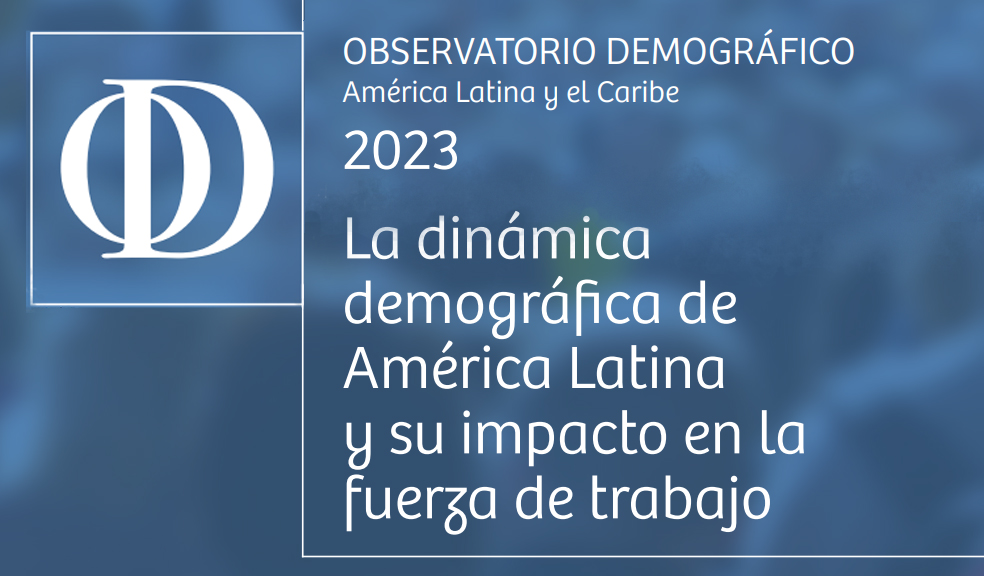50.8% of Latin America's Population is Part of the Labor Force, Projected to Increase to 54.6% by 2050
Work area(s)
ECLAC's Demographic Observatory 2023 report, launched today, examines the demographic dynamics of Latin America and its impact on the labor force.

In 2023, Latin America's population reached 652 million people. Of this total, 331 million were part of the labor force, representing 50.8% of the region's total population, according to the report Demographic Observatory 2023: Population Dynamics in Latin America and their Effects on the Labor Force, released today by the Economic Commission for Latin America and the Caribbean (ECLAC).
The document, prepared by ECLAC’s Latin American and Caribbean Demographic Center (CELADE) - Population Division, underscores that the diminishing population growth rate will lead the region’s population to grow to 737 million people in 2050, with a labor force of 402.7 million people, constituting 54.6% of the total regional population.
"The absorption of the additional labor force will therefore continue to pose a major challenge for the region's labor markets," warned José Manuel Salazar-Xirinachs, ECLAC's Executive Secretary, during the virtual event to launch the report.
ECLAC's senior representative added that Latin America and the Caribbean needs to enhance productivity, boost economic growth and create more and better jobs to absorb a larger labor force with a shifting age composition, including greater participation by women and older people in the workforce, as well as prolonged careers, especially in urban areas.
"To adequately address the different demographic dynamics and needs of the population, specific public policies are required to support a more productive, inclusive and sustainable development, leaving no one behind. We are confident that the information contained in this new edition of the Demographic Observatory will contribute to the incorporation of population factors in public policies, especially those aimed at labor inclusion, poverty reduction and inequality," underscored José Manuel Salazar-Xirinachs.
The Demographic Observatory 2023 confirms that Latin America's demographic dynamics have changed dramatically. In the last 70 years, the region has undergone unprecedented transformations, characterized by a rapid decline in fertility and mortality, and evidenced by changes in the population’s age composition, with youth and adult groups becoming the majority of the population.
According to the report, in most Latin American countries the age groups with the highest proportion of members consist of young adults, which can exert greater pressure on labor markets. Moreover, in 2050, the expansion of the labor force will outpace population growth, and the absorption of additional labor will continue to be a major challenge for the region's labor markets, it stresses.
The analysis of the Demographic Observatory 2023 highlights that the structural changes in the labor force between 1980 and 2022, and their projections towards 2050, present radically different scenarios according to age and gender, as well as urban or rural areas, which has implications for public policies on labor, education, health and care, among other areas.
During the 2000-2010 period, Latin America experienced an average annual increase of approximately 5.6 million people in its labor force. For the decade 2010-2022, estimates point to an average annual growth of 4.5 million people. For the following decade (2022-2032), a growth of 3.9 million people is projected, and for the period 2040-2050, an average annual growth of 1.5 million people is expected.
The Demographic Observatory also reveals that, if historical conditions continue, by 2050 the female labor force in the 25-64 age range will continue to rise, reaching nearly 73% of the age group. However, this figure will be almost 20 percentage points lower than that of men.
"These scenarios raise the urgent need to intensify public policies aimed at labor inclusion and gender equality," the document emphasizes.
Related content

Lanzamiento del Observatorio Demográfico 2023: La dinámica demográfica de América Latina y su impacto en la fuerza de trabajo
El CELADE-División de Población de la CEPAL invita al lanzamiento del Observatorio Demográfico 2023. La publicación recoge las tendencias de la fuerza de trabajo por sexo, edad y área de residencia…
Country(ies)
- Latin America and the Caribbean